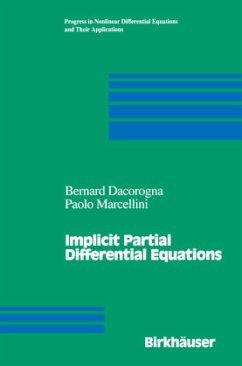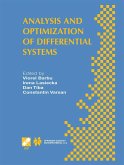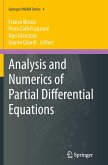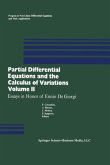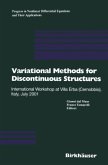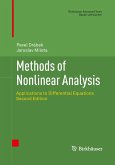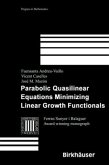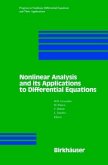"Provides a self-contained development of the new kind of differential equations... Includes many examples helpful in understanding the theory and is well [and] clearly written." -- -Mathematical Reviews
""...Topics of the book have important applications in variational calculus, nonlinear elasticity, phase transitions, and optimal design. In particular, Part IV (Chapters 7-9) includes the singular value case, the case of potential wells, and the complex eikonal equation. A lot of background material, as viscosity solutions, quasiconvexity and related topics, piecewise polynomial approximation in Sobolev spaces, convex integration, or nonclassical Vitali-type covering theorems, is presented in the book, which makes it essentially self-contained. Most of the results are original from the authors, some results are published even first time. This makes the book a unique introduction to this new topic, and will be found useful by experts in nonlinear analysis in general and PDEs in particular, as well as by advanced graduate students in this field." -- -Zentralblatt Math
Nonlinear partial differential equations has become one of the main tools of mod ern mathematical analysis; in spite of seemingly contradictory terminology, the subject of nonlinear differential equations finds its origins in the theory of linear differential equations, and a large part of functional analysis derived its inspiration from the study of linear pdes. In recent years, several mathematicians have investigated nonlinear equations, particularly those of the second order, both linear and nonlinear and either in divergence or nondivergence form. Quasilinear and fully nonlinear differential equations are relevant classes of such equations and have been widely examined in the mathematical literature. In this work we present a new family of differential equations called "implicit partial differential equations", described in detail in the introduction (c.f. Chapter 1). It is a class of nonlinear equations that does not include the family of fully nonlinear elliptic pdes. We present a new functional analytic method based on the Baire category theorem for handling the existence of almost everywhere solutions of these implicit equations. The results have been obtained for the most part in recent years and have important applications to the calculus of variations, nonlin ear elasticity, problems of phase transitions and optimal design; some results have not been published elsewhere.
""...Topics of the book have important applications in variational calculus, nonlinear elasticity, phase transitions, and optimal design. In particular, Part IV (Chapters 7-9) includes the singular value case, the case of potential wells, and the complex eikonal equation. A lot of background material, as viscosity solutions, quasiconvexity and related topics, piecewise polynomial approximation in Sobolev spaces, convex integration, or nonclassical Vitali-type covering theorems, is presented in the book, which makes it essentially self-contained. Most of the results are original from the authors, some results are published even first time. This makes the book a unique introduction to this new topic, and will be found useful by experts in nonlinear analysis in general and PDEs in particular, as well as by advanced graduate students in this field." -- -Zentralblatt Math
Nonlinear partial differential equations has become one of the main tools of mod ern mathematical analysis; in spite of seemingly contradictory terminology, the subject of nonlinear differential equations finds its origins in the theory of linear differential equations, and a large part of functional analysis derived its inspiration from the study of linear pdes. In recent years, several mathematicians have investigated nonlinear equations, particularly those of the second order, both linear and nonlinear and either in divergence or nondivergence form. Quasilinear and fully nonlinear differential equations are relevant classes of such equations and have been widely examined in the mathematical literature. In this work we present a new family of differential equations called "implicit partial differential equations", described in detail in the introduction (c.f. Chapter 1). It is a class of nonlinear equations that does not include the family of fully nonlinear elliptic pdes. We present a new functional analytic method based on the Baire category theorem for handling the existence of almost everywhere solutions of these implicit equations. The results have been obtained for the most part in recent years and have important applications to the calculus of variations, nonlin ear elasticity, problems of phase transitions and optimal design; some results have not been published elsewhere.
"Provides a self-contained development of the new kind of differential equations... Includes many examples helpful in understanding the theory and is well [and] clearly written." -Mathematical Reviews "...Topics of the book have important applications in variational calculus, nonlinear elasticity, phase transitions, and optimal design. In particular, Part IV (Chapters 7-9) includes the singular value case, the case of potential wells, and the complex eikonal equation. A lot of background material, as viscosity solutions, quasiconvexity and related topics, piecewise polynomial approximation in Sobolev spaces, convex integration, or nonclassical Vitali-type covering theorems, is presented in the book, which makes it essentially self-contained. Most of the results are original from the authors, some results are published even first time. This makes the book a unique introduction to this new topic, and will be found useful by experts in nonlinear analysis in general and PDEs in particular, as well as by advanced graduate students in this field." -Zentralblatt Math

